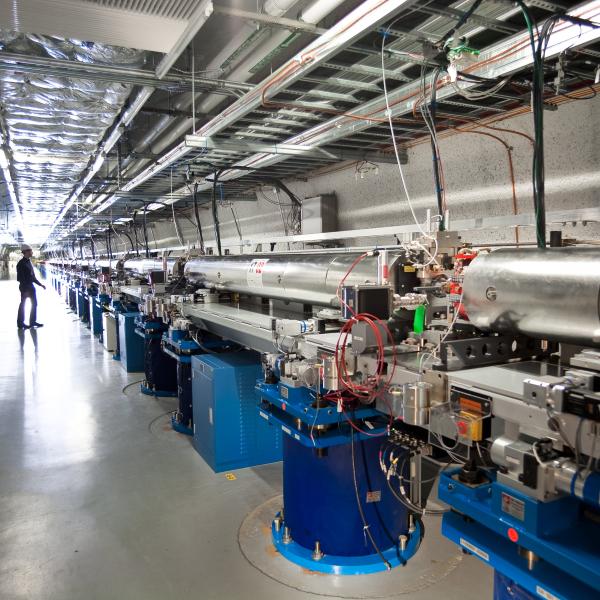when you think about RNA a key part of
our genetic material
synchronized-swimming probably isn't the
first image that comes to mind
researchers working at SLAC National
Accelerator Laboratory have recently
observed for the first time a molecular
switch in RNA that mimics a water ballet
with millions of segments of RNA
changing shape at the same time in
response to a chemical signal by using
the ultra bright ultra-fast x-ray pulses
produced by slacks Linette coherent
light source the researchers were able
to take atomic level resolution images
of this biochemical interaction in real
time this not only revealed the
previously unseen transition but also
demonstrated that researchers can now
use facilities like the LCLs to study
chemical interactions between
biomolecules a scientific first to study
this interaction the researchers used a
special kind of experimental setup
normally molecular reactions are studied
at the LCLs by using light to trigger
the reaction in a sample and then by
hitting the sample with x-rays from the
LCLs however because this interaction
was chemical in nature the researchers
use two pumps to precisely mix tiny
crystals of the RNA segments called
ribose switches with a special signaling
protein triggering the interaction the
mixture was then hit by an x-ray pulse
from the LCLs where the scattered x-rays
were recorded by a detector and used to
create high-resolution structures of the
rival switches by allowing the
biomolecules to mix for different
periods of time the researchers were
able to take images at different stages
of the process including the surprising
synchronized ballet where all of the
ribose switches drastically changed
shape almost instantaneously after a
short time mixing with the signaling
protein this technique not only unlocks
new information about RNA but also
enables researchers to study many kinds
of biochemical interactions which was
not previously possible at LCLs this
could even open the doors to improve
diagnosis and therapy for things like
cancer and HIV all in all though thanks
to this new technique we may discover
many new forms of molecular ballet and
the surprising results that come from
them
